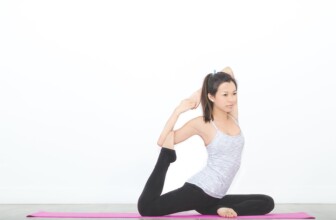Unlocking Inner Peace: Exploring 10 Effective Meditation Techniques for Everyone
Meditation has become a powerful tool for achieving inner peace and mental clarity amidst the chaos of modern life. With numerous techniques available, individuals can discover practices that resonate with their unique needs and lifestyles. This article explores ten effective meditation techniques, providing insights, real-life examples, and answers to common questions. Whether you're a novice or have some experience, this extensive guide aims to help you unlock a deeper sense of tranquility.
1. The Importance of Meditation in Today's World
In our fast-paced society, stress and anxiety have become everyday companions for many. Meditation offers a reprieve, allowing individuals to pause, reflect, and reconnect with their inner selves. Scientific studies have validated its benefits, including reduced stress levels, improved emotional health, and enhanced concentration.
1.1 Benefits of Meditation
- Stress Reduction: Regular meditation practice lowers cortisol levels, leading to reduced stress.
- Enhanced Emotional Well-being: Meditation has been linked to improved mood and lower levels of depression.
- Increased Focus: It can strengthen attention spans and help with task completion.
- Better Physical Health: Meditation can reduce blood pressure, improve immune function, and enhance overall health.
2. Ten Effective Meditation Techniques
Below, we delve into ten meditation techniques, each tailored for different preferences and lifestyles.
2.1 Mindfulness Meditation
Mindfulness meditation invites individuals to focus on the present moment. By observing thoughts, feelings, and bodily sensations without judgment, practitioners cultivate greater awareness and acceptance.
Real-Life Example:
Emily, a corporate lawyer, struggled with chronic stress. By incorporating 10 minutes of mindfulness meditation into her daily routine, she found herself more centered and better equipped to handle workplace challenges.
2.2 Loving-Kindness Meditation (Metta)
This technique encourages practitioners to cultivate feelings of compassion and love towards oneself and others. By repeating phrases of goodwill, individuals can foster a sense of connection and reduce feelings of isolation.
Real-Life Example:
During her journey to recovery from depression, Sarah found healing through Loving-Kindness Meditation. Sending thoughts of love to herself and her loved ones significantly improved her emotional state and mental health.
2.3 Guided Meditation
Guided meditation involves following a narrator or teacher through a meditative experience, often accompanied by calming music or nature sounds. This is particularly beneficial for beginners who may struggle with maintaining focus.
Real-Life Example:
Tom, hesitant to start meditating, discovered guided sessions online. Listening to guided meditations helped him find a sense of peace and clarity he hadn't experienced before.
2.4 Transcendental Meditation (TM)
Transcendental Meditation is a unique form that requires a mantra, a specific sound or phrase, which is repeated silently during meditation sessions. This technique is practiced for 20 minutes twice a day.
Real-Life Example:
Dr. James, a psychiatrist, integrated TM into his daily routine. The practice not only enhanced his professional effectiveness but also improved his relationship with family due to his heightened emotional awareness.
2.5 Zen Meditation (Zazen)
Zen meditation emphasizes seated practice and focused observation. Participants maintain a straight posture, focusing on breath and bodily sensations, often aiming to reach a state of ‘no thought.'
Real-Life Example:
Lisa, a yoga instructor, attended a Zen retreat. The immersive experience deepened her meditation practice, allowing her to connect with her spirituality in ways she never imagined.
2.6 Body Scan Meditation
In Body Scan Meditation, individuals mentally scan their bodies for tension and discomfort, promoting relaxation and awareness. This technique is dignified for relieving stress after a long day.
Real-Life Example:
Mark, a tech professional, often carried tension in his shoulders. By practicing Body Scan Meditation, he learned to release this tension, resulting in better posture and comfort throughout the day.
2.7 Breath Awareness Meditation
This simple yet effective technique focuses solely on the breath. By observing inhalation and exhalation, individuals learn to anchor their thoughts and center themselves.
Real-Life Example:
Julia, who often dealt with anxiety attacks, found solace in Breath Awareness Meditation. Taking the time to focus on her breath helped her calm her racing mind during stressful moments.
2.8 Chakra Meditation
Chakra meditation focuses on the body's energy centers. Practitioners believe that balancing these chakras can lead to enhanced emotional and physical well-being.
Real-Life Example:
Raj, a small business owner, utilized Chakra Meditation to align his energy after experiencing burnout. This practice rejuvenated his spirit and brought passion back to his work.
2.9 Mantra Meditation
This technique involves silently repeating a phrase or sound to help focus the mind. The chosen mantra serves as an anchor, allowing for deeper concentration.
Real-Life Example:
Hannah struggled with a busy mind during meditation. By incorporating Mantra Meditation, she found peaceful focus, leading to richer meditative experiences.
2.10 Movement-Based Meditation
Incorporating movement, such as yoga or tai chi, can be an excellent way for those who find it challenging to sit still. Mindful movement promotes body awareness and relaxation.
Real-Life Example:
William, an avid runner, transformed his runs into a form of meditation. Focusing on his movements and breath helped him achieve a state of mindfulness, improving both his running performance and overall mental state.
3. Frequently Asked Questions (FAQ)
Q: How long should I meditate each day?
A: Starting with just 5-10 minutes daily can be beneficial. Gradually increase the time as you become more comfortable with the practice.
Q: Do I need to sit cross-legged to meditate?
A: No, meditation can be practiced seated in a chair, on a cushion, or even lying down. The key is to maintain a comfortable and alert posture.
Q: What if I can't clear my mind?
A: It's normal for thoughts to arise during meditation. Instead of forcing yourself to clear your mind, acknowledge the thoughts and gently bring your focus back to your breath or mantra.
Q: Can I meditate in a noisy environment?
A: Yes, while a quiet space is ideal, you can learn to meditate amidst noise. Use external sounds as focal points or practice mindfulness in response to them.
Q: Is there a right or wrong way to meditate?
A: Meditation is personal; what works for one may not work for another. Experiment with different techniques to find what resonates best with you.
4. Case Studies: The Transformative Power of Meditation
Through real-life case studies, we can see the profound impact meditation can have on diverse individuals.
Case Study 1: The Corporate Executive
John, an executive in a high-stakes environment, faced chronic stress due to tight deadlines and leadership demands. After discovering mindfulness meditation, he committed to a daily practice of just 15 minutes. Over time, John reported increased clarity in decision-making, improved relationships with colleagues, and a noticeable reduction in stress levels. His story is a testament to how meditation can positively transform workplace dynamics.
Case Study 2: The Recovering Addict
Anna, a recovering addict, found traditional recovery methods challenging. Upon integrating mindfulness and Loving-Kindness Meditation into her routine, she experienced a significant transformation. The practices helped her cultivate self-love and acceptance, crucial components in her recovery process. This holistic approach contributed to her long-term success and emotional health.
5. Resources for Learning and Practicing Meditation
The following table provides resources—books, apps, and websites—to assist beginners and experienced meditators in their journey.
| Source | Description | Link |
|---|---|---|
| Headspace | An app offering guided meditations suitable for all levels. | Headspace |
| Calm | A meditation app focusing on stress reduction and sleep improvement. | Calm |
| Insight Timer | A free app providing thousands of guided meditations and talks. | Insight Timer |
| The Miracle of Mindfulness | A book by Thich Nhat Hanh offering insight into mindfulness practices. | Amazon |
| 10% Happier | A book by Dan Harris that explores practical meditation techniques. | Amazon |
6. Tips for Integrating Meditation into Daily Life
- Consistency is Key: Establish a daily meditation habit, even if it’s just for a few minutes.
- Create a Dedicated Space: Designate a quiet and comfortable spot for meditation.
- Join a Group: Consider participating in meditation classes or groups for support and accountability.
- Use Technology: Leverage meditation apps to guide your sessions.
- Be Patient: Understand that developing a meditation practice takes time; be kind to yourself along the journey.
7. Conclusion
Meditation is a versatile tool that can lead to inner peace, emotional balance, and enhanced well-being. By exploring and experimenting with various techniques, individuals can discover practices that resonate with their unique lifestyles. As we continue to navigate a world filled with distractions and stressors, making meditation a regular part of our lives can provide invaluable tools for mental health and emotional resilience.
Future Trends in Meditation Research
As interest in meditation grows, researchers are delving into its effects on neuroscience. Future studies may explore:
- Long-term impacts of consistent meditation practice on brain structure.
- How meditation can be tailored for different populations, such as children or individuals with specific mental health challenges.
- Integration of technology in meditation—such as virtual reality sessions that simulate calming environments.
The journey toward inner peace and mental clarity is within reach for everyone willing to explore the vast world of meditation. With dedication and practice, you can unlock the door to profound serenity.
Disclaimer: This article is for informational purposes only and does not constitute medical advice. Always consult a healthcare provider before starting any new mental health or wellness program.










